The Marble Mountains consist of five hills, 10 km south of Danang and 19 km north of Hoi An. The hills were once offshore, but by shedding they are now part of the mainland. The Marble Mountains are also called Ngu Hanh Son, the “Five Elements”. Each hill represents an element of cosmos and is named after: Hoa Son (Fire Mountain), Moc Son (Wood Mountain), Kim Son (Gold Mountain), Tho Son (Earth Mountain) and Thuy Son (Water Mountain).
The largest and most famous mountain is the Thuy Son. In the time of the Champa empire, the caves on the mountain contain Hindu sanctuaries. After the downfall of this empire, the Vietnamese founded Buddhist temples in the same caves. The current temples date back to the 19th century.
The Marble Mountains get their name from the white, red and green marble that produce from the hills. Marble workers from the village of Non Nuoc at the foot of the Thuy Son make artifacts and souvenirs from it. The hills are not only a pilgrimage place for Buddhists, but also a well-known tourist attraction. Children walk up with the visitors, hoping to get a tip as a guide or sell a souvenir.
Water Mountain
There are two paths to the top of the Water Mountain. It is best to start at the souvenir stalls in the village and descend along the path by the sea side. Via 156 steps you will find a gate with three entrances. Before the gate leads a path to the left, after a split. Stairs on the left hand lead to Vong Giang Dai, a viewpoint with magnificent views of the other Marble Mountains and surrounding area. The path to the right of the split goes to a number of hexagonal tombs.
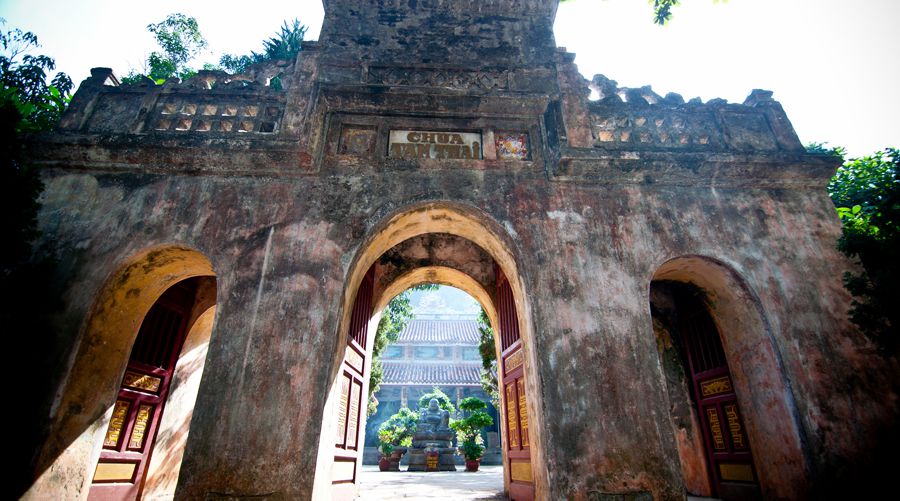
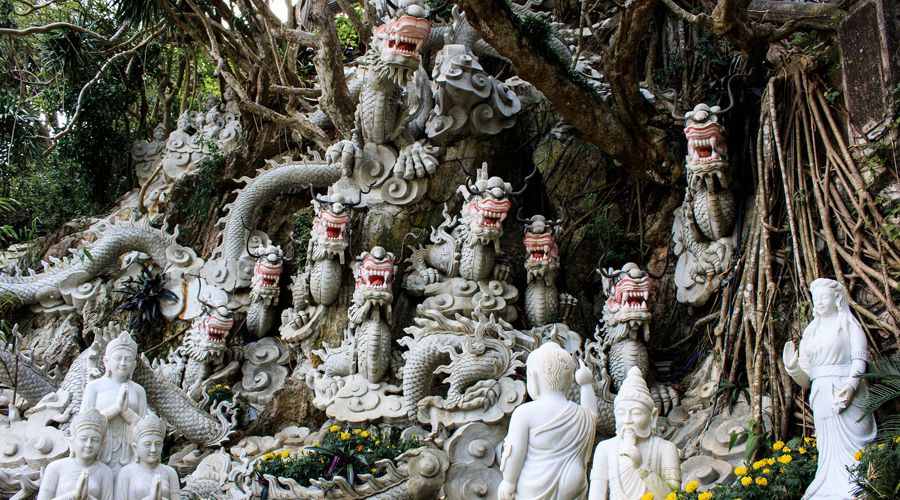
Return to the gate that gives access to the Tam Thai Pagoda. Emperor Minh Mang visited this shrine in 1825 and was so impressed that he placed the pagoda under his personal protection. The pagoda was restored between 1946 and 1975. Inside the interior are gilded images of Sakyamuni, a manifestation of Buddha, and of Quan Am, the goddess of righteousness.
The cave
A path to the left of the pagoda runs to a gate. Immediately after this gate follows three paths. The left path goes to Hoa Nghiem, a small, half-open cave with a Buddha image. A passage on the left hand side of the cave leads to Huyen Khong, the spectacular cave of the Marble Mountains. Stone statues of mandarins on the left and soldiers on the right guard the entrance. The 25 meter high cave is protected by beautifully filtered light flowing through an opening in the ceiling. You will see, among other things, an altar with statues opposite the entrance and a cut out, sitting Buddha in the rock wall above it. The cave served as a hospital for the Viet Cong during Vietnam War and as a shelter for the artillery battalion complete existing of women, that destroyed eighteen American aircraft in Nuoc Man’s airport in 1972 from the hill. The path straight leads to Dong Linh Nham, a half-cave with an altar and some statues.
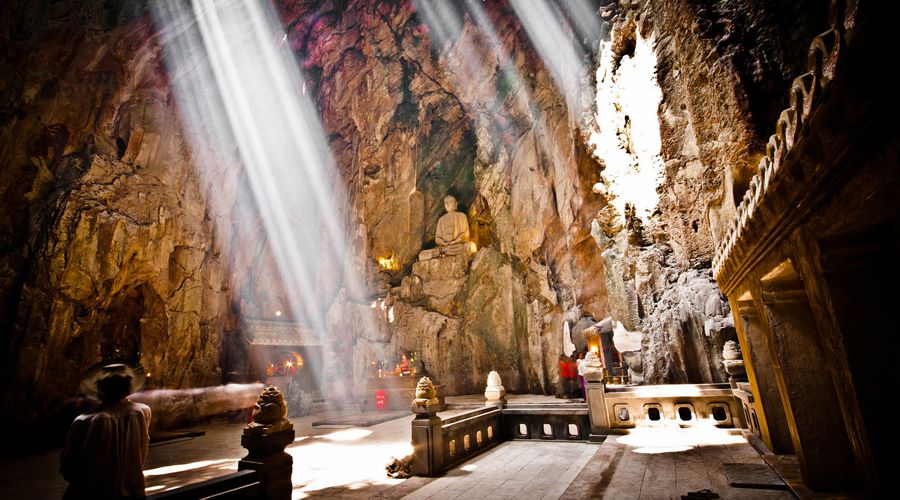
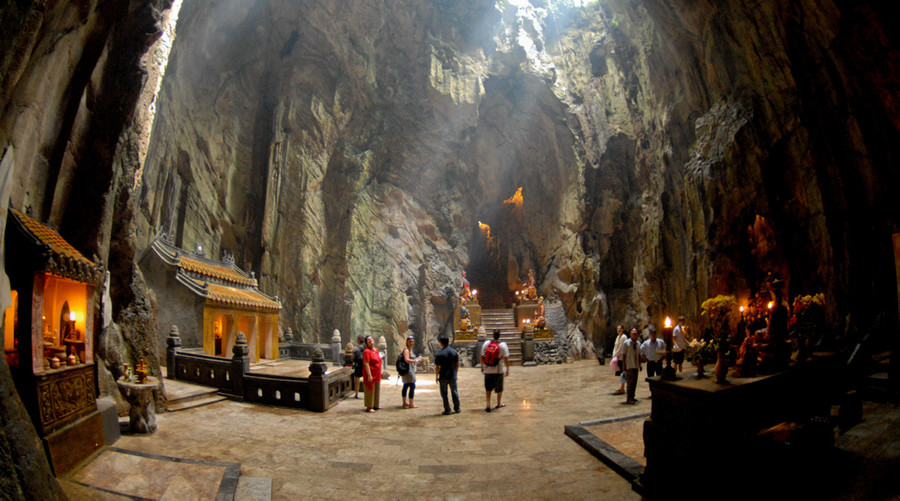
Via the right path and a gate you come to a valley. On the right is the Van Thong Cave. The bullet holes in the incense barrel in front of the entrance make it clear that there is also heavy fought here. In the cave there is a yellow image of a standing Buddha.
Linh Youth Pagoda
Through a natural opening in the rocky wall you leave the valley. Afterwards, a side road leads to Vong Hai Da, a viewing point with views of China Beach and the South China Sea. As you follow the path, you see the Linh Ung Pagoda on your left. In the niche to the left of the entrance of the pagoda is a guard with fire-red tongue and raised fist; The guard on the right has a sword. Next to the pagoda is a pavilion with a bodhisattva, a Buddha in formation. The Linh Youth Pagoda is still being expanded.
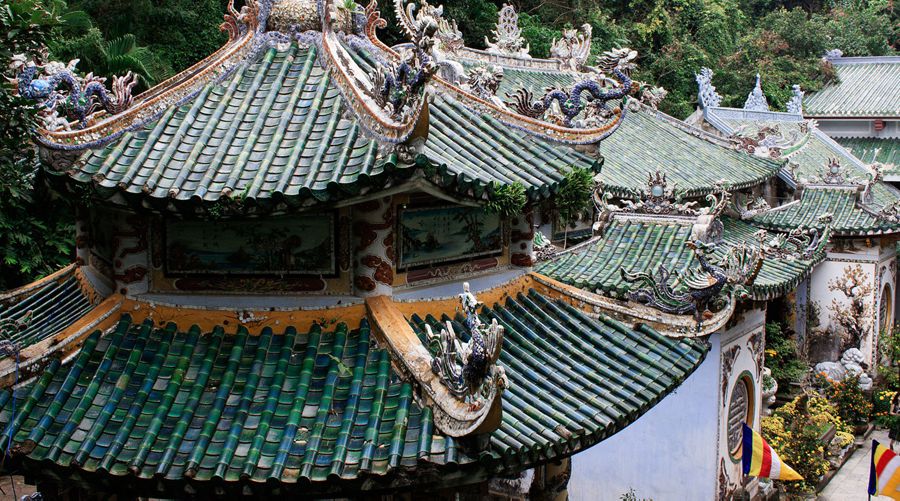
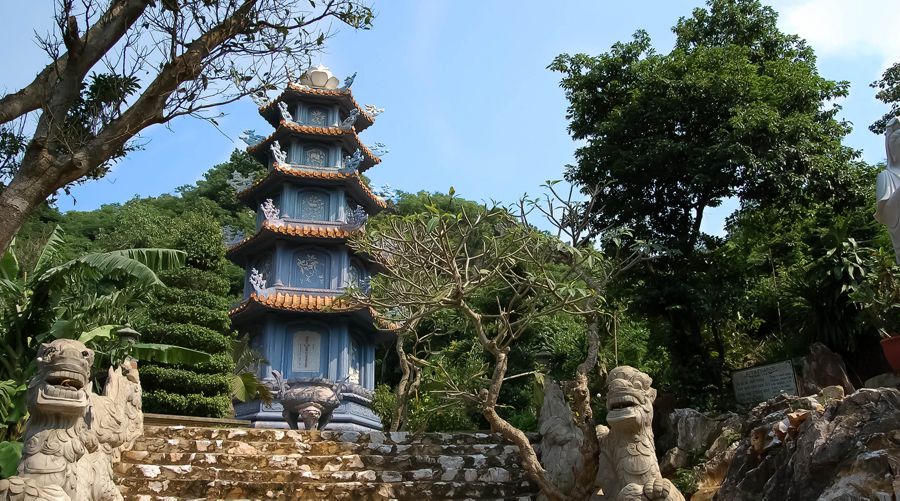
Just behind the pagoda is a path to Tang Chan Dong, a complex of caves with sitting and lying Buddha statues and Cham sculpture. The path down leads to the road from Non Nuoc to China Beach.
